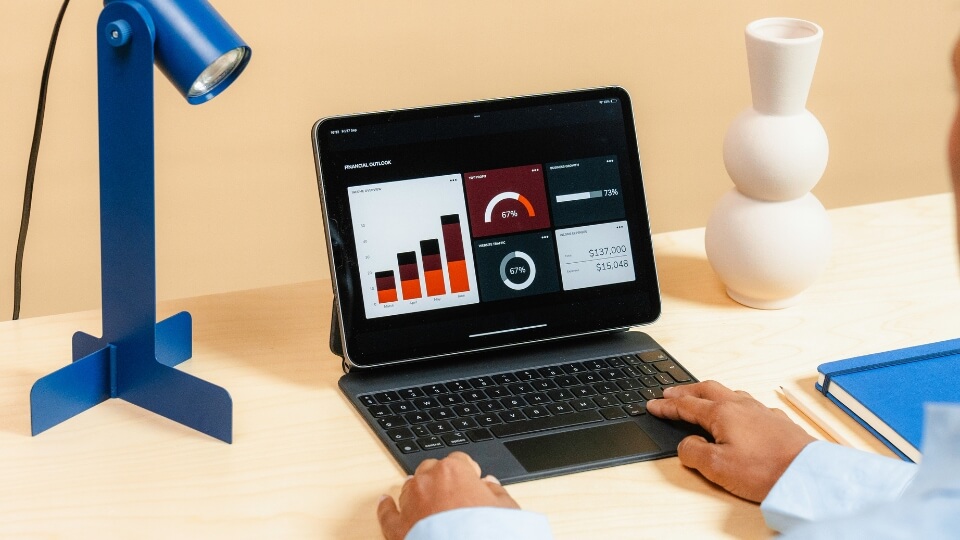Conversion Rates in B2B eCommerce: The What, Why, and How

When you think about conversion rates, your mind might go straight to B2C businesses—getting shoppers to buy a pair of sneakers or book a hotel. But conversion rates are just as critical—if not more so—in B2B eCommerce, where the stakes are often much higher.
In the B2C world, a single conversion might mean selling a €50 item, but in B2B, each conversion often represents bulk orders worth thousands of euros and the potential for long-term partnerships. Studies show that while average conversion rates for B2C eCommerce hover around 2-3%, B2B conversion rates often exceed 5%, with high-performing B2B webshops reaching as much as 45% with Turis.
Why does this matter? Because in B2B, the relationships you build and the reliability you offer are your currency.
Each conversion isn’t just a sale—it’s an opportunity to establish trust, create recurring revenue, and cement your position as a preferred supplier. In this article, we’ll break down the what, why, and how of conversion rates in B2B eCommerce, with actionable tips and examples to make it all click.
What is Conversion Rate in B2B eCommerce?
Conversion rate is the percentage of visitors to your B2B eCommerce shop who take a specific desired action. For B2B businesses, these actions could include:
- Placing an order
- Signing up for an account
- Requesting a quote
- Downloading product catalogs or marketing materials
Formula for Conversion Rate

Example:
- If 1,000 visitors come to your site in a month and 50 place orders, your conversion rate is:
(50/1,000)×100=5%(50/1,000)×100=5%
Why is Conversion Rate important in B2B eCommerce?
In B2B, high conversion rates are more than just a number—they reflect how effectively your platform is meeting the needs of your business clients.
1. Maximizes ROI:
Every visitor to your site represents an investment in marketing, outreach, or reputation. A higher conversion rate means you’re getting more value from your traffic.
2. Drives business growth:
For B2B, a single conversion often leads to large orders, recurring sales, or long-term partnerships. Each conversion is not just revenue—it’s a step toward sustained business relationships.
3. Improves customer experience:
A high conversion rate often correlates with a seamless customer experience. When visitors can quickly find what they need and place an order without friction, they’re more likely to convert.
Factors that affect B2B eCommerce Conversion Rates
- Ease of navigation:
- Is your site user-friendly for busy procurement managers? Are categories, products, and features easy to find?
Example: A wholesale coffee supplier could lose a sale if a cafe manager can’t quickly locate bulk pricing or delivery options.
- Is your site user-friendly for busy procurement managers? Are categories, products, and features easy to find?
- Account and pricing features:
- Many B2B buyers want custom pricing, bulk discounts, or account-specific terms. Without these, potential customers might leave.
Example: A restaurant supply company offering personalized pricing to large clients will likely see higher conversions than a one-size-fits-all pricing model.
- Many B2B buyers want custom pricing, bulk discounts, or account-specific terms. Without these, potential customers might leave.
- Mobile optimization:
- Business buyers increasingly shop on mobile. A site that isn’t mobile-friendly might lose out.
Example: A convenience store owner browsing for inventory on their smartphone needs a smooth, responsive experience.
- Business buyers increasingly shop on mobile. A site that isn’t mobile-friendly might lose out.
- Clear Call-to-Actions (CTAs):
- Buttons like “Request a Quote,” “Place an Order,” or “Contact Sales” should be prominent and persuasive.
- Trust and credibility:
- In B2B, trust is everything. Display customer reviews, case studies, or certifications to reassure potential buyers.
How to improve Conversion Rates in B2B eCommerce
1. Simplify the buying process
Remove unnecessary steps from the ordering process. Offer features like saved carts, quick reorders, and subscription options. Example: A hotel supplier could let buyers save recurring orders of toiletries, cutting down on effort and boosting conversions.
2. Optimize for mobile
Ensure your site loads quickly and works seamlessly on smartphones and tablets.
Example: A construction supply company could lose a contractor’s order if their mobile checkout is clunky or error-prone.
3. Provide detailed product information
Include specifications, images, bulk pricing, and even video demonstrations.
Example: A medical supplier showing clear specs for gloves and masks ensures buyers feel confident making a purchase.
4. Offer flexible payment and pricing options
Accept various payment methods, offer credit terms, and ensure pricing is transparent.
Example: A retailer sourcing wholesale apparel might convert more if offered both credit card payments and 30-day invoicing.
5. Use retargeting and follow-up
Implement email reminders for abandoned carts and provide tailored offers for returning customers.
Example: A wholesale beverage distributor could send a discount code to clients who left without finalizing their order.
6. Optimized checkout
A fast, reliable, and intuitive checkout process ensures buyers can complete their orders without unnecessary delays or confusion.
Example: A furniture supply company that offers flexible payment terms, real-time stock visibility, and a quick reordering feature can secure repeat customers and higher conversions.
18 Ways to make your B2B Checkout as easy as B2C

Important eCommerce metrics to monitor
To ensure your conversion optimization efforts are working, track these metrics:
- Bounce Rate: Are visitors leaving quickly without engaging?
- Average Order Value (AOV): Higher AOV often signals better upsell opportunities.
- Customer Retention: Are first-time buyers returning?
Discover how B2B Loyalty Programs boost growth in B2B eCommerce

Bringing it all together
Improving conversion rates in B2B eCommerce is about understanding your customers’ needs and removing obstacles. It’s not just about driving sales but about creating an experience that keeps clients coming back.
Whether you’re a food supplier, a hardware distributor, or a office equipment wholesaler, focusing on conversion rates can help your business thrive.
At Turis, we’ve designed our platform to make optimizing conversion rates simple. From personalized pricing to mobile-friendly design and built-in subscription options, Turis provides the tools you need to turn visitors into loyal customers.
Want to see how Turis can help? Let’s talk!
Related articles
START FREE TRIAL
Start generating more B2B orders today
Get a free preview. Import products from your B2C store

